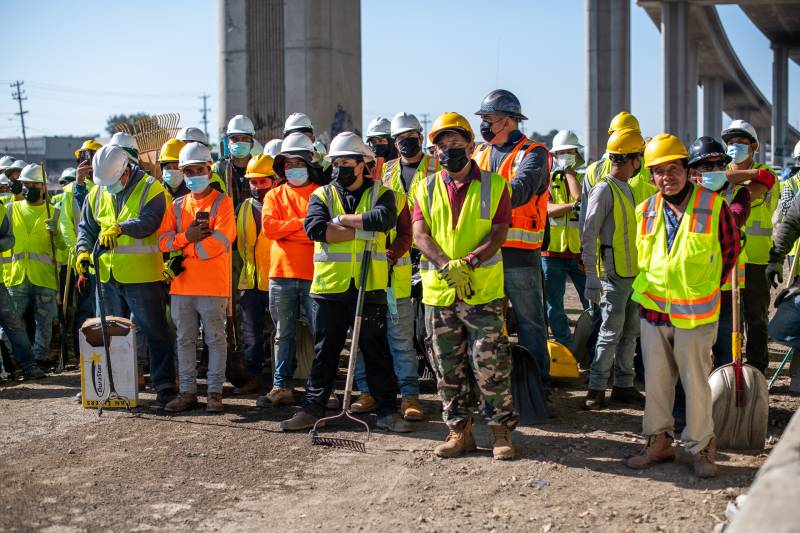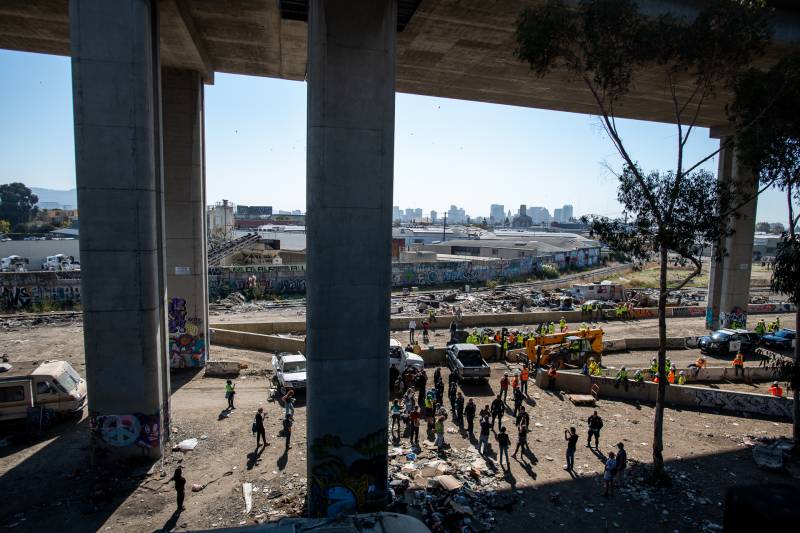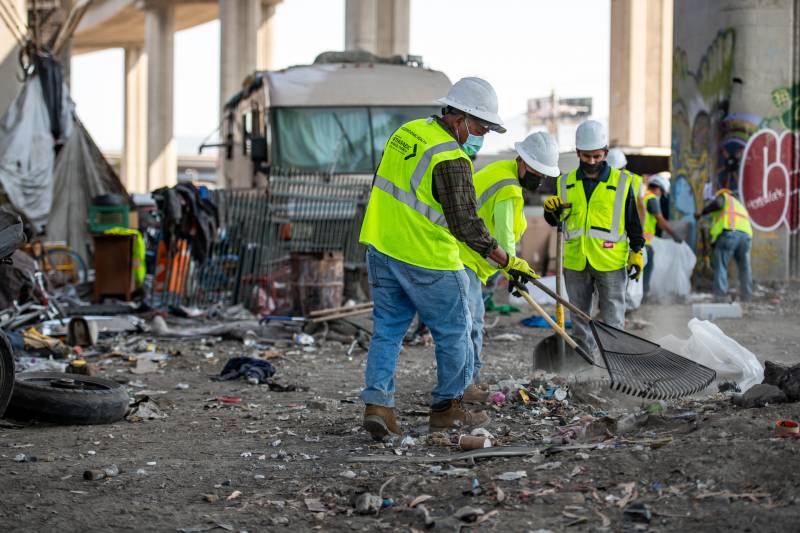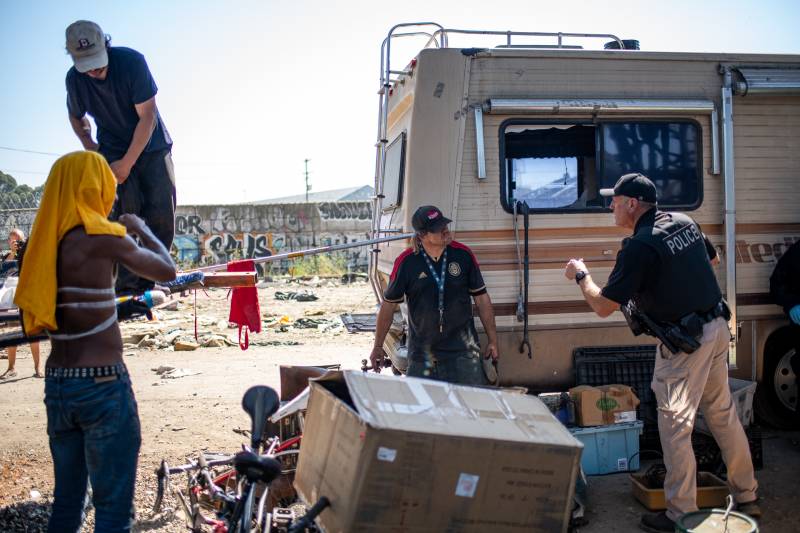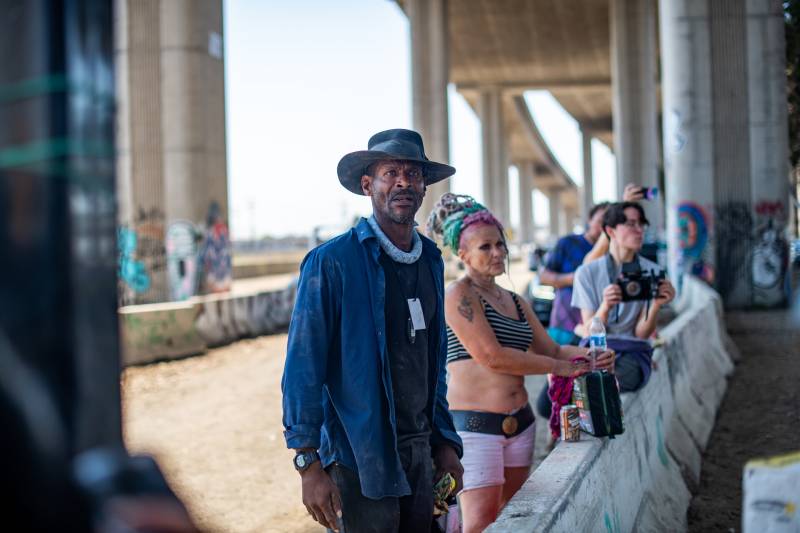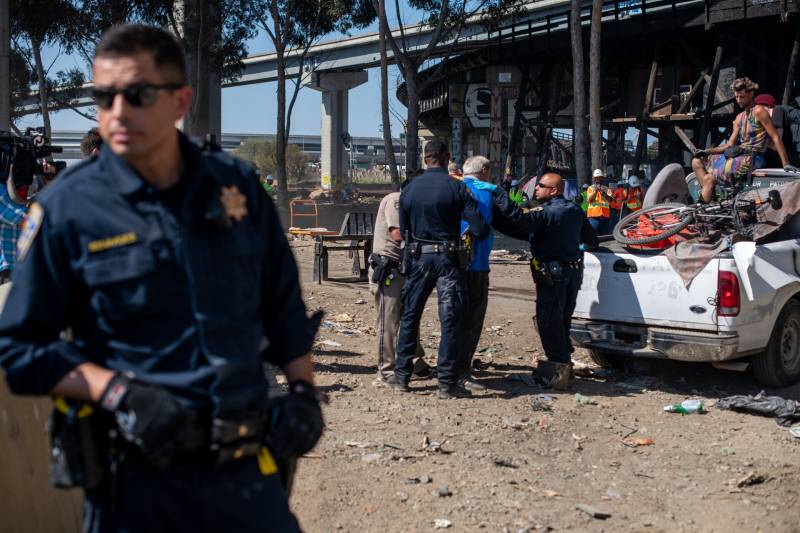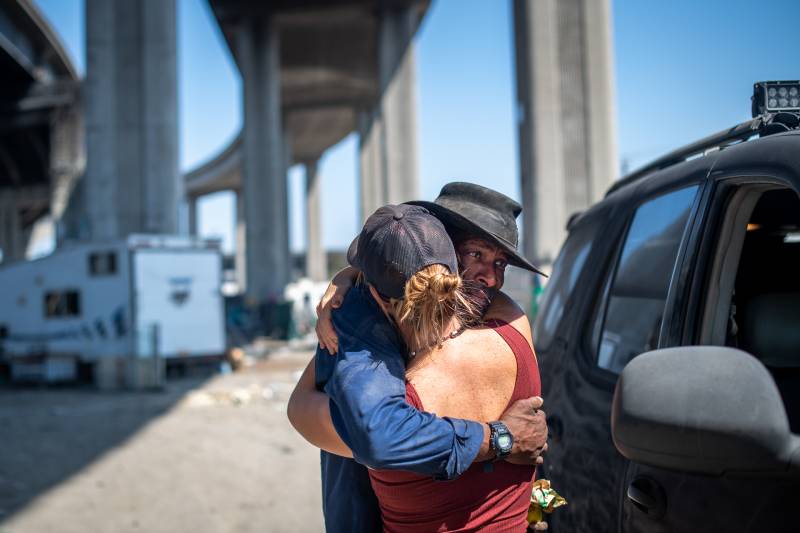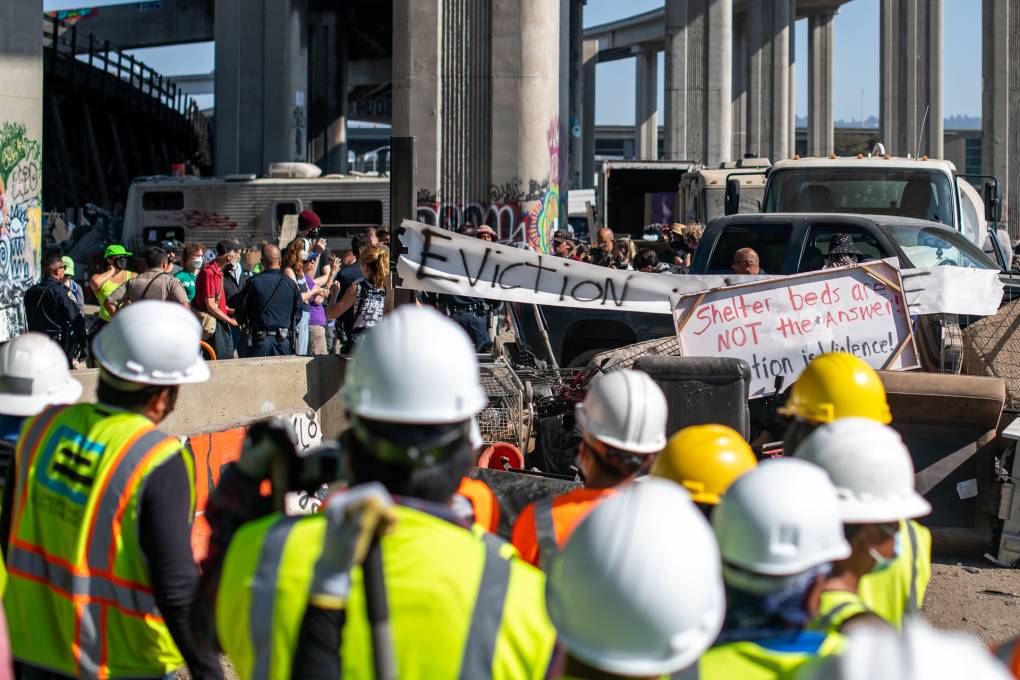Emotions ran hot Thursday as Caltrans began evicting residents from Oakland’s largest encampment of unhoused people. Some residents of the Wood Street encampment, with help from volunteers and activists, erected a makeshift barricade to block the only access road to the site.
Residents, Activists Decry Evictions at Oakland's Largest Homeless Encampment
Woody Guthrie’s folk anthem “This Land Is Your Land” blared from a windup amplifier as Oakland police and California Highway Patrol officers faced off with residents and supporters.
“You destroy people’s lives, you take their belongings,” said Ben Murawski, 47, his voice quivering. “And how are they supposed to get back on their feet to do anything to move forward in life?”
Two people — Ron McGowan, who lived in the northern area of the encampment and was set to be evicted Thursday, and Jaz Colibri, a resident and organizer — both were arrested after refusing to leave a pickup truck that was blocking the access road. Colibri lay down, motionless, in the bed of the truck, prompting officers to pick her up and physically carry her away, as supporters chanted, “We love you, Jaz!” and “Housing is a human right!”
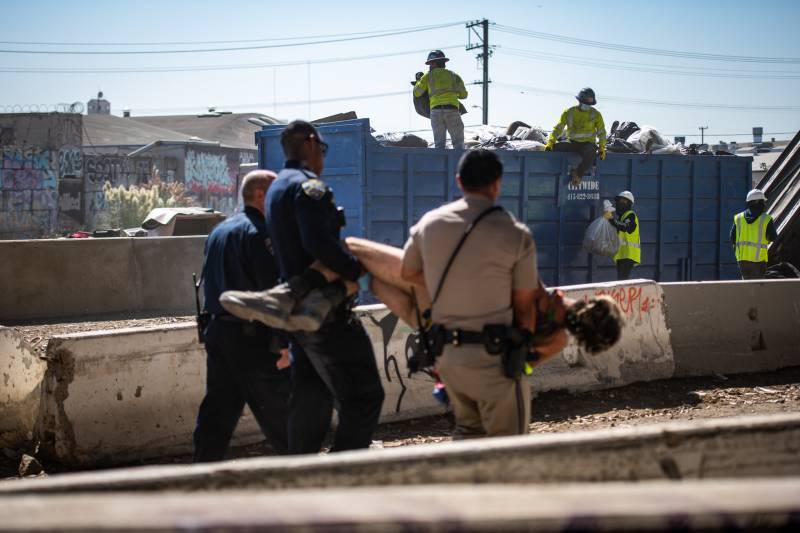
The evictions came after a more-than-month-long delay, resulting from a lawsuit residents filed in July to block Caltrans from clearing the site. Federal District Judge William Orrick ruled last month they could continue, citing safety concerns.
But despite the delay, for many residents, the evictions came too quickly. Caltrans posted notices on Tuesday that the first of the three-phased evictions would start in two days.
“How could you complain if you’re on somebody else’s land, and they want you to leave in 30 days? Seems reasonable,” said Matthew Schatzinger, 45, who’s lived at Wood Street for nearly four years. “But to get out of here in two days or then destroy your stuff, or take your stuff, it just doesn’t make sense to me.”
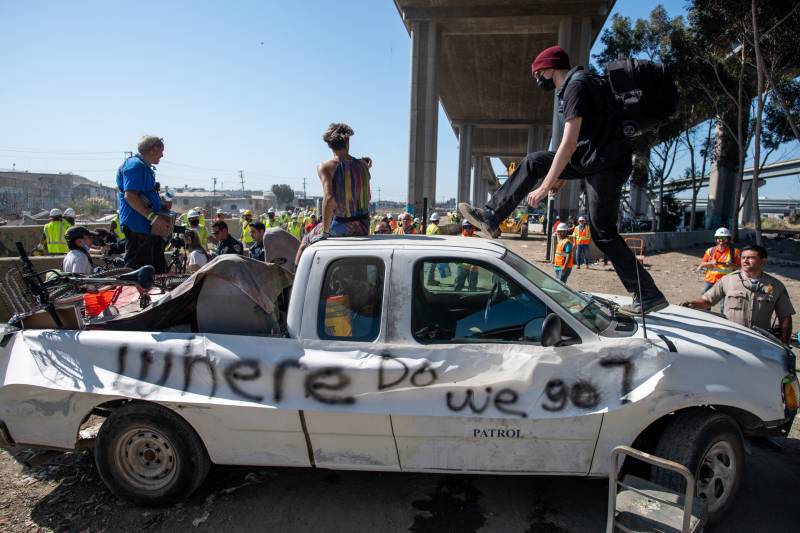
In his order, Judge Orrick directed Caltrans to work with the city of Oakland and Alameda County to offer shelter to the estimated 200 residents who live at Wood Street. As of Thursday, the county had made contact with 75 residents and around half had accepted offers of shelter, said Jerri Applegate Randrup, a spokesperson for Alameda County.
Randrup said the county offered residents spaces in congregate shelters, Oakland’s “cabin community” or “tuff shed” shelters, and safe RV parking, among other options.
Jeremy Oliveira, 42, said he got a spot at a hotel that’s been converted into housing for people who were formerly homeless. Even though he’ll have to share a room, he said it was a much better situation than some of the other shelters.
“I’m really happy. It’s gonna help me out a whole lot,” Oliveira said. “It’s going to be good. I’m going to actually be able to get restful sleep.”
But Schatzinger said he was offered only a spot at a tuff shed site, which he declined because there is no parking within three blocks, residents aren’t allowed to bring in mattresses or bedding and can only use city-provided cots, and there is little space to store his belongings. Instead, he and his neighbor, Jessica Huffman, 42, will likely be looking for some other place to park their RVs.
They came to Wood Street after being forced to leave other encampments, Huffman said, and she didn’t want to return to a situation where she’s required to move her RV every few days.
“It’s going to be a big problem when we’re forced into residential neighborhoods,” Huffman said. “That’s why the cops all pushed us out here in the first place. But it looks like we’re probably going to have to.”
Over the past decade, the encampment at Wood Street has grown from a few RVs parked on the street to a sprawling tangle of structures, vehicles and trailers. It stretches for more than 15 city blocks underneath the I-880 overpass between Wood Street and the BNSF and Union Pacific railroad tracks on land owned by Caltrans, the city of Oakland, BNSF and private entities.
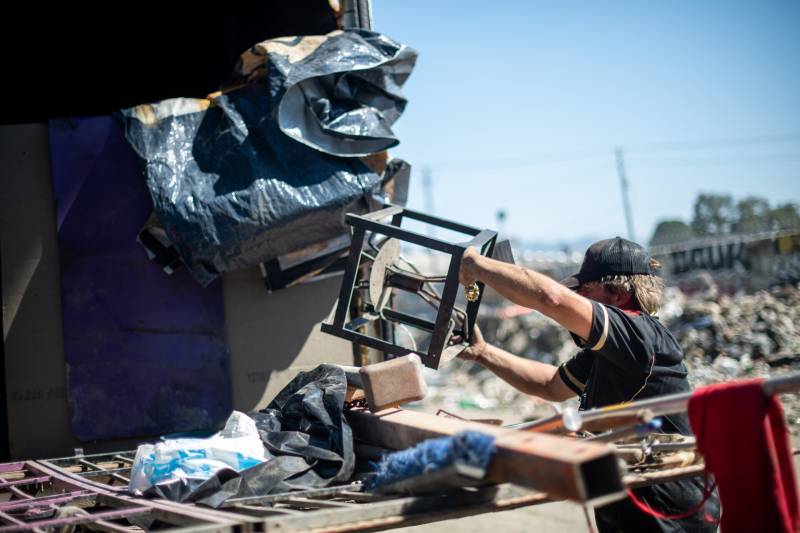
But attorneys for Caltrans say the encampment posed a serious health and safety risk, citing some 200 fires over the past two years, including one on July 11 that sent plumes of smoke onto the freeway and prompted the transportation agency to begin clearing the site.
“The frequency with fires, especially in that area,” Mark Guenzi, an attorney for Caltrans, said at an August 26 hearing, “is just very concerning given the potential for catastrophic risk.”
The evictions are expected to continue over the next six weeks.
